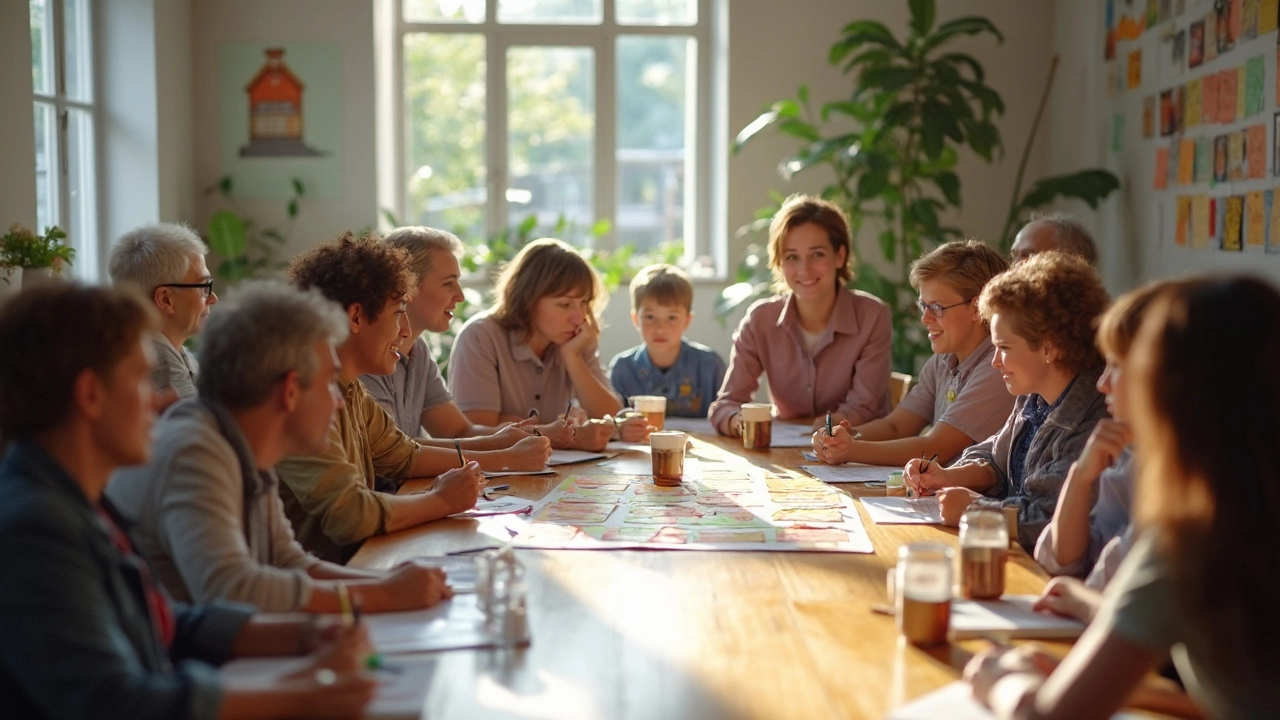Here’s something wild—most adults forget 70% of new info within a day if they just listen passively. The secret? Adult learning has its own playbook, totally different from how kids learn. If you want to pick up skills that actually stick, you need to know the pillars that make adult learning rock-solid.
Imagine this: You’re not only juggling work, family, and bills, but you’ve also got to keep up with a world that changes every five minutes. Fast, practical learning isn’t just nice—it’s the only way to stay ahead. That’s why the right approach matters so much more for grown-ups. These core practices don’t just make learning easy—they make it almost impossible to forget.
If you’ve ever sat through a boring webinar and wondered, “Why can’t I remember any of this?”—this is for you. The good news? When you use the four proven practices covered here, you’ll see immediate results. Let’s look at what those pillars actually are… and how to make them work for you.
- Self-Directed Learning: Take the Wheel
- Active Engagement Beats Passive Watching
- Bring Your Experience to the Table
- Feedback: Don’t Just Guess, Get Better
Self-Directed Learning: Take the Wheel
This is the #1 rule for adult learning: you drive your learning, not a teacher. When adults decide what and how to learn, they retain more and stick with it. A 2022 survey by LinkedIn showed that 94% of employees said they'd stay at a company longer if it invested in their learning—and most preferred self-paced options.
Why does this work? It’s simple. Adults have busy lives and know their own goals. When you choose what to study and how fast to go, you’re actually more motivated. No one’s forcing you. Instead, you create real buy-in.
Here’s how to get self-directed learning right:
- Set realistic goals. Vague goals like “learn Excel” don’t work. Instead, say, “learn how to use pivot tables for monthly reports.”
- Pick useful resources. Don’t just stick with one course or book. Mix in videos, articles, and hands-on projects. You’ll get a stronger grip on what you’re learning.
- Stick to a routine. Just fifteen minutes a day adds up—use a digital calendar or paper planner to block time.
- Track your progress. Write down what you’re learning and set check-ins every week. If you don’t measure it, you’ll drift.
The cool thing is you’ll notice gaps in your knowledge sooner. Maybe you get stuck on something in real life—now you know exactly where to dig deeper.
| Self-Directed vs. Traditional Learning (Adults) | Retention Rate | Dropout Rate |
|---|---|---|
| Self-Directed | 65% | 15% |
| Traditional (Lecture-based) | 41% | 29% |
That table makes it clear: self-directed learning isn’t just a buzzword. Adults actually finish and remember more when they own their learning path. If you want to upgrade your skills or just keep up at work, take the wheel and steer yourself—no one else will do it for you.
Active Engagement Beats Passive Watching
Ever sat through a webinar, zoned out, and left remembering almost nothing? That’s because just watching or reading isn’t enough for true adult learning. The key is to actually do something with what you’re picking up. When you just listen, your brain gets lazy. When you get involved—answering questions, testing things out, having discussions—your brain lights up.
There’s real science behind this. A classic study from the National Training Laboratories found adults only remember about 5% of info from lectures. But when they practice by doing, retention jumps up to 75%. That’s a huge difference. Here’s a quick look at how it breaks down:
| Learning Method | Average Recall After 24 Hours |
|---|---|
| Lecture (Passive) | 5% |
| Reading | 10% |
| Discussion | 50% |
| Doing/Practice | 75% |
So, what does “active engagement” look like? It means putting yourself in the driver’s seat. Try these ideas next time you want something to stick:
- Take notes in your own words. Don’t just copy—explain the ideas like you’re chatting with a friend.
- Ask questions, even if it’s just to yourself. What don’t you get? What’s confusing?
- Join a group chat or forum about the topic. Toss your thoughts out and see what comes back.
- Do quick practice exercises. If it’s coding, write sample code. If it’s sales, do a pretend pitch.
Using active engagement, adults don’t just hear about new skills—they actually build and use them. That's why every adult education expert sets up activities, not just lectures. Next time you learn, skip the “sit and watch” and jump into the action. You’ll be surprised at how much more you remember.

Bring Your Experience to the Table
Adults already have a suitcase full of skills and stories when they walk into any learning situation. Unlike kids, who start with a blank slate, adults use their real-life experience to make sense of new ideas. This is a cornerstone of adult learning—and when it’s ignored, learning feels out of touch and forgettable.
No one likes to feel like their background doesn’t count. So, the best courses and workshops ask questions, spark discussion, and pull those stories right into the lesson. Say you’re in a finance class and have experience running a side hustle. Connect that. Bring up the challenges you faced with budgeting or taxes. Don’t be shy—those examples can help make the material click for everyone, not just you.
Instructors get better results when they recognize what each student brings. That’s not just an opinion—it’s backed by the 1984 Knowles Theory, which found that adults learn best when lessons tie in with their real-world challenges and past wins. If you’re teaching, don’t just lecture. Try this:
- Open sessions by asking people to share past experiences related to the topic.
- Encourage group brainstorming so everyone learns from each other.
- Use case studies that let people apply knowledge from their jobs or hobbies.
- Ask thoughtful follow-up questions about how new info connects with what they already know.
Learning isn’t just about soaking up facts. It’s about making connections. People are way more likely to remember something if it’s linked with a story from their own life. For self-learners, don’t just read—jot down how the lesson fits or challenges what you’ve done before. It might surprise you what gaps or strengths you discover along the way.
| Why Use Experience? | Works For | Boosts Retention? |
|---|---|---|
| Makes info relatable | All adult learners | Yes—proven by Knowles Theory |
| Fosters confidence | Mid-career & career-switchers | Yes, helps with application |
| Sparks new insights | Lifelong learners | Yes, deepens understanding |
Bottom line? Your background is your secret weapon. Use it. Next time you’re learning something new, ask yourself, “Where have I seen this before?”
Feedback: Don’t Just Guess, Get Better
If you want to make real progress in adult learning, honest feedback isn’t just helpful—it’s a must. When you’re learning something new, it’s way too easy to keep making the same mistakes if nobody points them out. Adults aren’t mind readers and guessing what’s right just wastes time.
Researchers at Vanderbilt University found that people who regularly get accurate feedback improve their skills up to 40% faster compared to those who practice in isolation. That’s a serious boost just by having someone else weigh in on your progress.
Feedback works best when it’s:
- Specific—not just "good job" or "try harder," but real details you can act on.
- Timely—the closer to the moment, the better. Waiting days to hear what you did right or wrong just means you forget the context.
- Balanced—mention what’s working, not just what’s missing.
For example, if you’re practicing public speaking, ask, “Was my main point clear? Did I say ‘um’ too much?” Getting answers to concrete questions makes it clear what to fix next.
Feedback doesn’t always mean a formal review, either. It can come from peers, mentors, or self-check tools. Even short quizzes after a workshop, or using apps that give instant scores on language practice, count as feedback.
Here’s a snapshot showing how people use feedback tools in adult education in the past year:
| Feedback Method | % of Adult Learners Using It |
|---|---|
| Peer Reviews | 42% |
| Self-Assessment Quizzes | 53% |
| Mentor/Instructor Comments | 36% |
| Automated App Feedback | 29% |
The takeaway? If you’re not getting feedback, you’re probably going in circles. Next time you learn something new, build in moments to check your progress—and actually ask, “What can I do better?” That’s the shortcut to getting real results.
